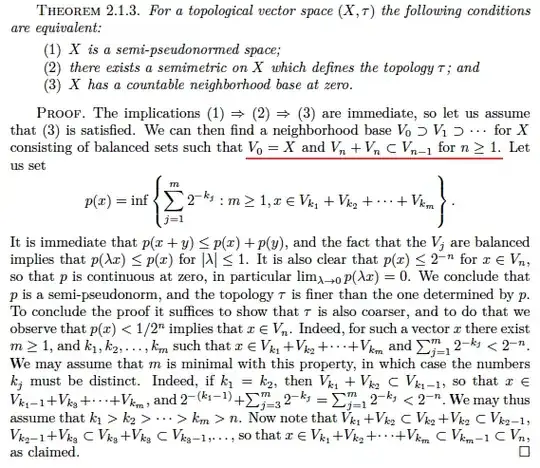I'm trying to read a proof of the following theorem
Here is my question:
How can one show the existence of a neighborhood base with the following properties as indicated in the proof?
- $V_j\supset V_{j+1}$;
- $V_0=X$;
- $V_n+V_n\subset V_{n-1}$.
- $V_j$ is balanced
The first property can be obtained by the answer to the question Constructing a local nested base at a point in a first-countable space. And the third and fourth properies are related to the fact that for every nbhd $V$ of zero there exists a balanced nbhd $U$ of zero so that $U+U\subset V$. But I don't see how to put things together.
